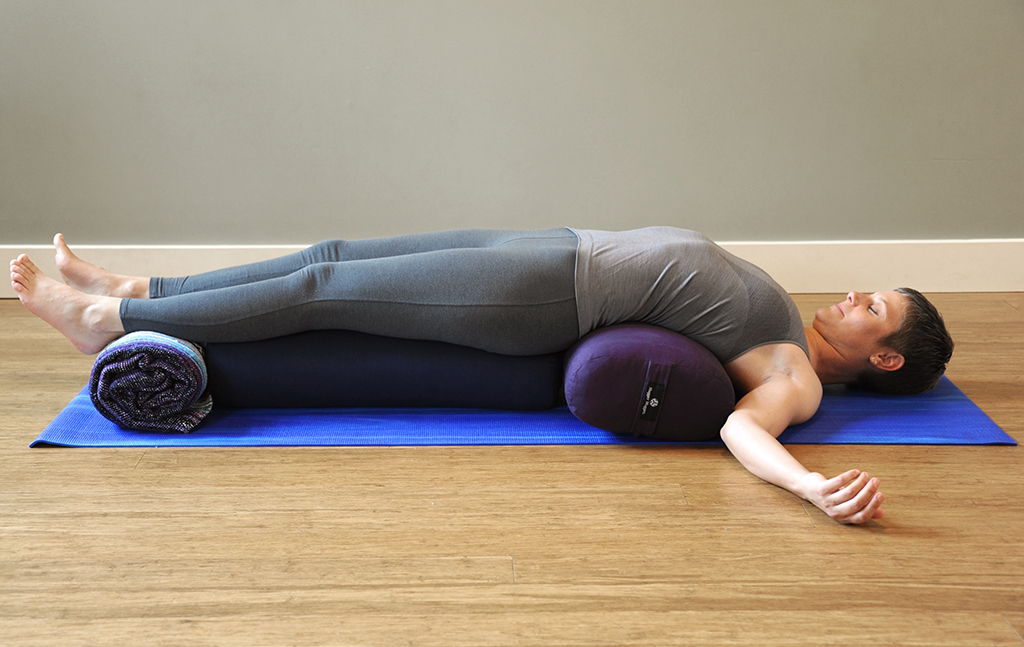
Have you ever been in a yoga class when someone (maybe you) experienced a spontaneous emotional event? Sometimes, especially in intensive workshop situations, a new physical opening may trigger an emotional opening. Certain yoga poses can create a sense of calm, others can uplift energy. Others expand your heart space.
Emotions and the Body
The Eastern medical model posits that emotions are stored in specific organs. Here’s a list of organs and their corresponding emotions, according to Chinese medicine:
- Heart, small intestine: Joy
- Spleen, stomach: Worry, over thinking
- Lungs, large intestine: Sadness
- Kidneys, bladder: Fear
- Liver, gall bladder: Anger
The theory is, when we stretch and squeeze the tissues around these organs, the emotions stored there can be unleashed. There haven’t been any empirical studies proving this, but it is not uncommon for people to experience emotional release while having bodywork or practicing asanas.
Even though we don’t officially recognize these connections in the West, we have developed language that describes some of them: “my heart has wings,” “butterflies in my stomach,” “got so scared I peed my pants.” You get the idea.
Your yoga practice can support expanding the heart area, and perhaps even unleash some joy into your day. Practicing poses that mobilize and expand the ribcage can help us create space in that area. The ribcage is the structure that houses the heart. Mobilizing the thoracic spine, to which the ribs are attached, is the most effective way to create spaciousness for the heart.
Heart Health
February is Heart Health Month. Deep, abdominal breathing—as opposed to shallow, upper chest breathing—is essential to maintaining heart health. In Donna Farhi’s The Breathing Book, she explains the relationship between breathing and heart health:
“There have been a number of significant studies showing a correlation between upper chest breathing and heart disease. In one stunning report, patients who had already experienced a heart attack were taught how to breathe diaphragmatically and to generalize this behavior in everyday activities. In doing so they significantly reduced their chances of having a second heart attack.”
Deep, diaphragmatic breathing depends on chest and abdominal mobility. In honor of Heart Health Month, we’ll explore four poses that expand and mobilize the ribcage and abdomen to promote free breathing and open-heartedness.
Yoga Poses to Expand Your Heart
The first step to expand your heart space is to mobilize the ribcage. There are many, many poses in asana practice that can mobilize the ribcage. The poses I suggest below can stand for other poses in their class—lateral bending, twisting and backbending. I’ve chosen relatively simple practices because part of expanding the heart is being kind to your body.
Gather together some props, including a nonskid yoga mat. For the third pose, add a couple of yoga blocks and one or more yoga blankets. If you have a yoga bolster, you can use it for Savasana.
- Talasana (Palm Tree Pose): Mobilizing the ribcage requires that we mobilize the thoracic spine. The thoracic spine is built for lateral bending. In addition, when we bend to the side, we stretch the soft tissue and create space between the ribs on the opposite side. Since the lungs are also housed in the ribcage, there’s more room to breathe. Here’s a post explaining how to practice Talasana.
- Jathara Parivartanasana (Revolved Belly Pose): In addition to lateral bending, the thoracic spine is built for rotation. Any twist will help mobilize that section of the spine. There are, of course, lots of wonderful standing and seated twists. But lying down creates a different relationship to gravity, one that allows for easier breathing, and therefore, more mobility. Here’s a post that explains the how-to of this pose.
- Matsyasana (Supported Fish Pose): Once you’ve mobilized your thoracic spine in the ways it’s designed to move, you can challenge it with a backbend. The thoracic spine doesn’t actually extend much. The facet joints, the joints between each vertebrae, are designed to put brakes on backbending. But that doesn’t mean that you can’t still extend the thoracic spine a bit. Because we all spend so much time hovering over desks, steering wheels and the like, it wouldn’t be a bad idea to practice this pose every day. Here’s a description of how to practice. One suggestion: In order for this pose to be comfortable, your head needs to be level, not tilting back. Make sure to put enough blankets under your head and neck to ensure that your neck is relaxed. Then relax and enjoy!
- Setu Bandha Sarvangasana (Bridge Pose): Bridge Pose not only expands your heart area, but it also strengthens your whole back body. It’s a great antidote to spending lots of time sitting in chairs. Here’s a post that explains more about the benefits of Setu Bandha Sarvangasana, and gives some practice pointers. If you want to practice a restorative version that uses a yoga block, try this pose. If you prefer to use yoga bolsters, read this post.
- Upavista Konasana (Seated Angle Pose): Okay. So this is not really an official heart-opening pose, but it’s important to add a forward bend into the mix. So far, this practice has included a lateral bend, a twist and two backbends. A forward bend is in order. For information on practicing Upavista Konasana, read this.
- Savasana (Corpse Pose): What would a heart-opening practice be without Savasana? After practicing backbends it’s nice to put support under your legs to release tension in your lumbar area. The simplest way to do this is to roll up a blanket and place it under your knees. If you have a yoga bolster, try this luxurious option, using a yoga bolster, block and a blanket.
